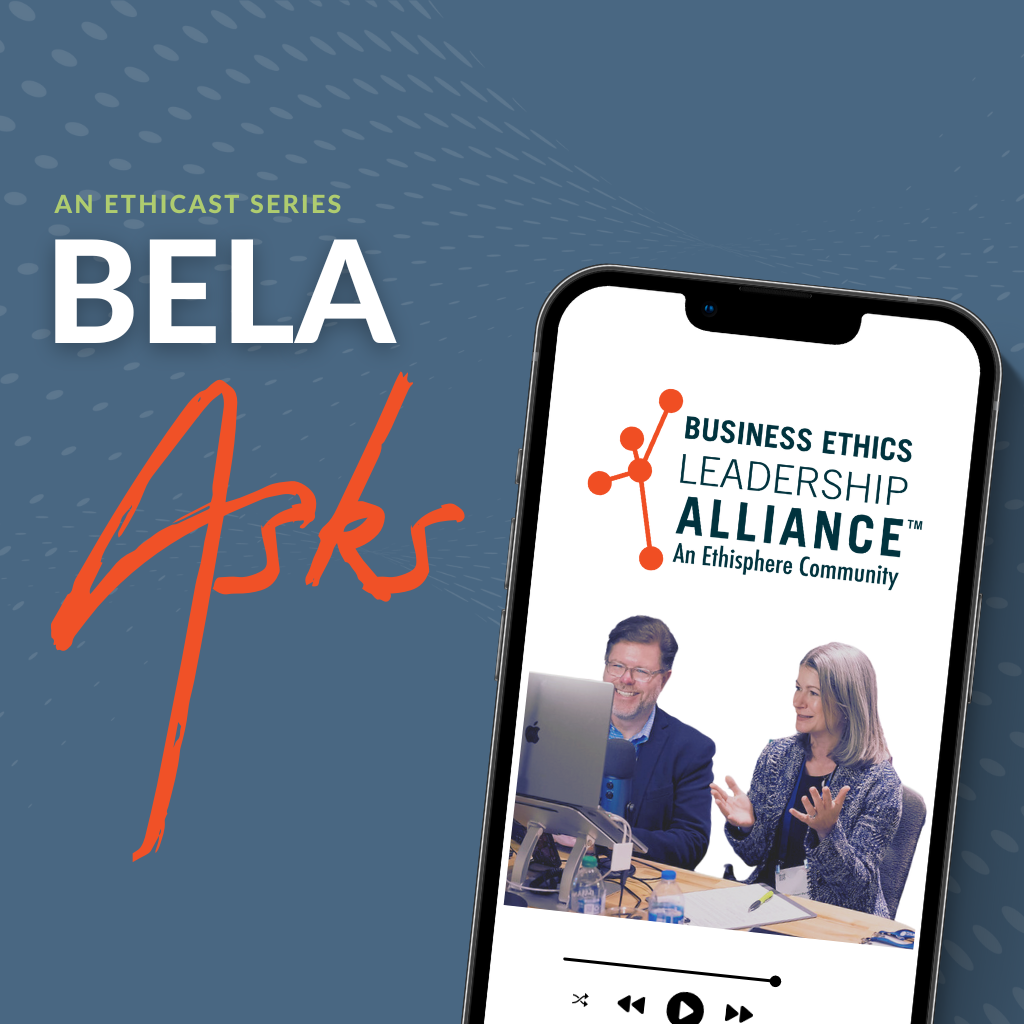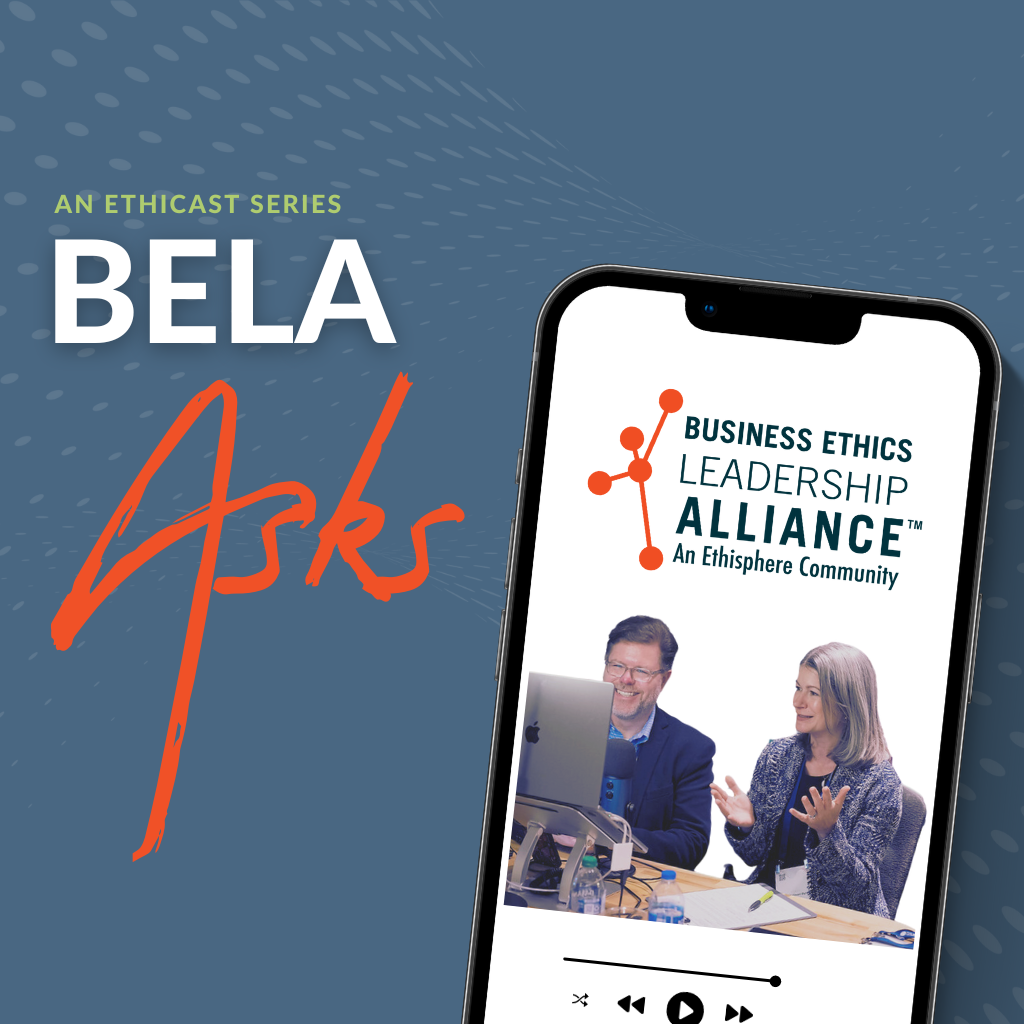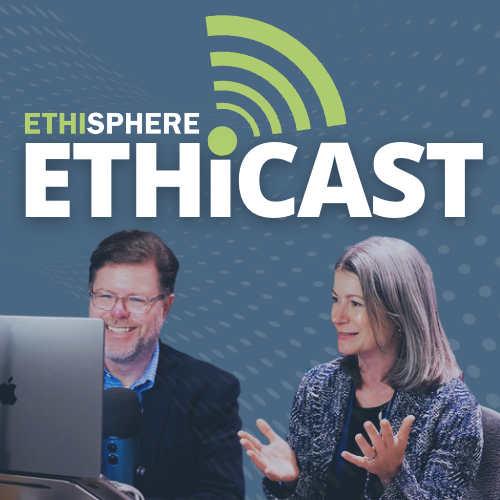[00:00:00] Speaker A: Hi, everyone. The Business Ethics Leadership alliance has questions and we have answers. I'm your host, Bill Coffin. Welcome to another Bella Asks episode of the Ethicast.
One of the best benefits of being a member of the Business Ethics Leadership alliance or bella, is that if you have any questions at all about ethics and compliance, you can submit them to Bella's concierge service and one of our internal experts will provide an answer and direct you to a helpful resource for more information.
Many of these requests speak to broad challenges facing Bella members and by extension, the wider ethics and compliance profession. That's why we are using this show to thematically respond to high level questions from the Bella community.
And joining us once again to answer those questions is Bella chair and Erica Salmon Byrne. Erica, it's good to see you again.
[00:00:57] Speaker B: Likewise, Bill. Looking forward to getting into this batch of questions.
[00:01:00] Speaker A: Well, our next question is a measurement question and it reads, what are good data sources to use to measure program effectiveness?
[00:01:08] Speaker B: I love this question, Bill, for a variety of reasons. One of them is, of course, you know, the Department of Justice's Evaluation of Corporate Compliance Programs guidance update that came out in September talked about effectiveness measurement and it talked about effectiveness measurement in a couple of different, different ways. It talked about it in the context of program effectiveness, it talked about it in the context of culture effectiveness. It talked about it in the context of training effectiveness. And so very much the message that we should take away from that document is that the regulators expect to see companies trying to figure out whether what they're doing is working. And isn't that what we all want to figure out? Right. What, you know, what is what I'm doing working?
So a couple of thoughts on this particular question. The first, and this is something that you and I have been talking about for a long time, Bill, is data layering. So no one data source is going to give you all of your effectiveness answers because at the end of the day, if your program is working, you've prevented a whole bunch of bad things from happening and there's no real meaningful way that you can prove that, right? That is the dilemma of any good of any compliance officer and has been for decades. So instead, what you want to look for is you want to look for a mix of activity and performance metrics that are going to tell you whether or not you are the guardrails that you have established are keeping the train on the tracks. And in order to do that effectively, you've got to look at data from places other than just your own program. Now, your program data is Great. You should definitely be pulling things like speed to completion of training and click rates on your comms and your survey data and your policy metrics. You know, in terms of, you know, whether people are opening your written standards, all of those things matter a lot. But where the magic comes in is when you then look at other control function data and you start to pull that in and layer it with your own data. So here at, at the sphere, we like to call it data layering. Some people call it data lake, whatever. You know what, however you want to describe it, it's this process of pulling data from other sources and looking for trends in the data. So maybe one of the things that you are looking at is your manager turnover data along with your culture and engagement survey results. Maybe you're looking at quality data and you're overlaying your quality data with engagement with your compliance communications. Right? There's. Or finance data or audit failure data. Right. There's so many different places where the kinds of things we care about as compliance teams are the kinds of things that your other control functions are similarly tracking. And you should utilize that data because it's going to give you a sense as to whether or not the information you're putting out for employees, which is to guide them in making their decisions, is landing and being used where it should be.
[00:03:57] Speaker A: This reminds me of a webinar we had just recently. We're talking about program assessment. And one of the questions that kind of came up was where does the program assessment end and a risk assessment or a culture assessment begin? And the real answer kind of got to the fact that these are all multilayered. There's a huge Venn diagram that connects these things. And so to your point about data layering, you know, again, this reminds me of how there is no one silver bullet for any of these things. There's no one data point that defines these things. And I think it's a little, it's a little troubling sometimes when you see outside the space, when folks publish reports that kind of bring up a single data point and kind of rest the entirety of the profession or best practices on this one key data point. It's just not that simple.
[00:04:33] Speaker B: It is not that simple because again, you know, we are mitigating people created risk and people are not that simple. So what you need to look at is, you need to look at what are the things that are going to signal to me behavior and activities by my employees that would give me a sense as to whether or not they're making decisions the way I need them to be making those decisions. That's fundamentally where the effectiveness analysis needs to go. And, Bill, I'm glad you brought up the program assessment point because the overlapping, you know, the overlap between a program assessment, a risk assessment, and a culture assessment, that middle of that Venn diagram is very large because your culture informs your program, your risks informs, inform your program, your program then mitigates your risks. Like it's, it's, it's not easy to separate those pieces. So, you know, it's the reason why you and I end up giving a lot of the same advice on these Bella asks, which is get to know your control function partners, right? Who your controller, who's your finance, you know, lead. Who's your audit person, you know, who's your person from an HR perspective in fill in the blank jurisdiction that's very far away. Those are your on the ground, in the weeds partners. And you can inform and make their work better, and they can inform and make your work better. And that is the, that is the power of bringing your datasets together.
[00:05:57] Speaker A: Well, Erica, as always, we appreciate you weighing in on these questions. On behalf of the whole Bell community, thank you so much for coming back onto the show.
[00:06:03] Speaker B: No, absolutely, Bill, my pleasure. And to all the Bella members that are out there listening into this, keep the questions coming, okay? And Bill and I will come back and take on some more.
[00:06:12] Speaker A: To learn more about Bella, Please
[email protected] Bella to request guest access to the member resource hub and to speak with the Bella engagement director. And if you have a question that you would like answered on Bella Asks, be sure to use the Bella Concierge service and we'll get to it as soon as we can. I'm Bill Coffin, and this has been a special Bella Asks episode of the Ethicast. For more episodes, please Visit the Ethisphere YouTube
[email protected] ethisphere and if this is your first time enjoying the show, please make sure to like and subscribe on YouTube, Apple Podcasts, or Spotify. Thanks for joining us. And until next time, remember, strong ethics is good business.


